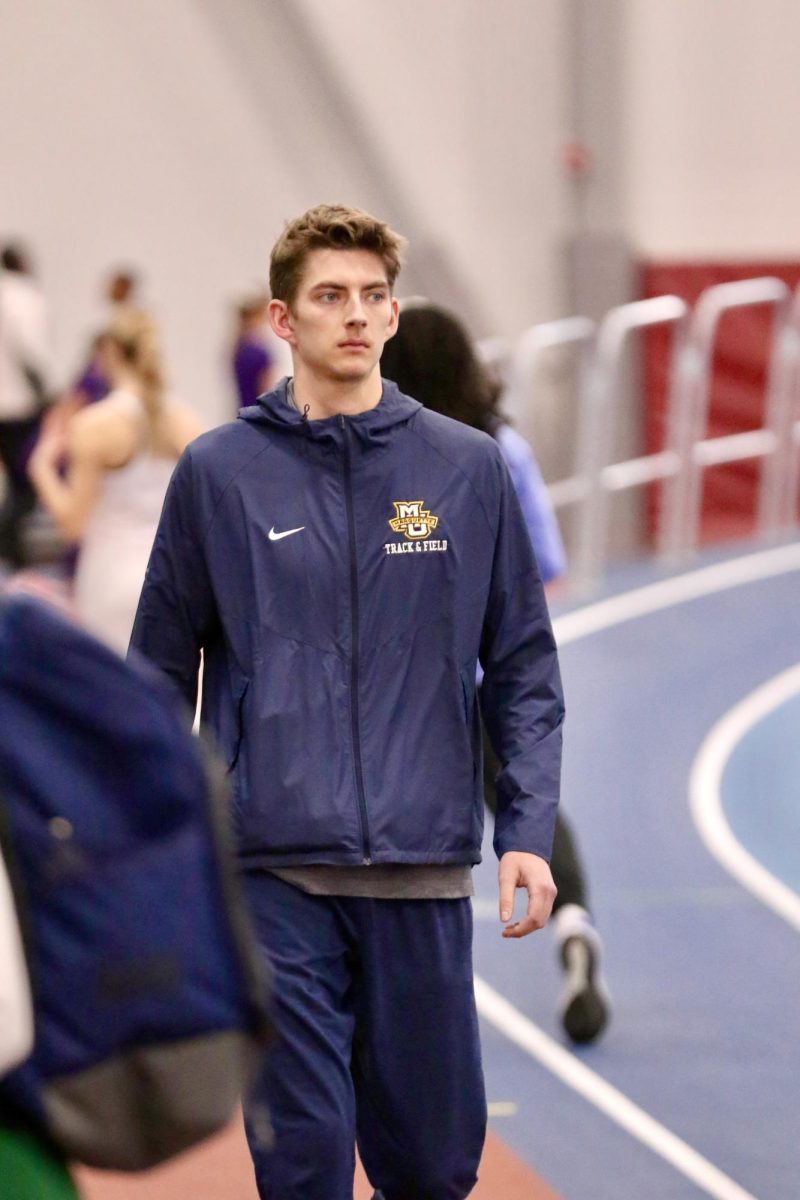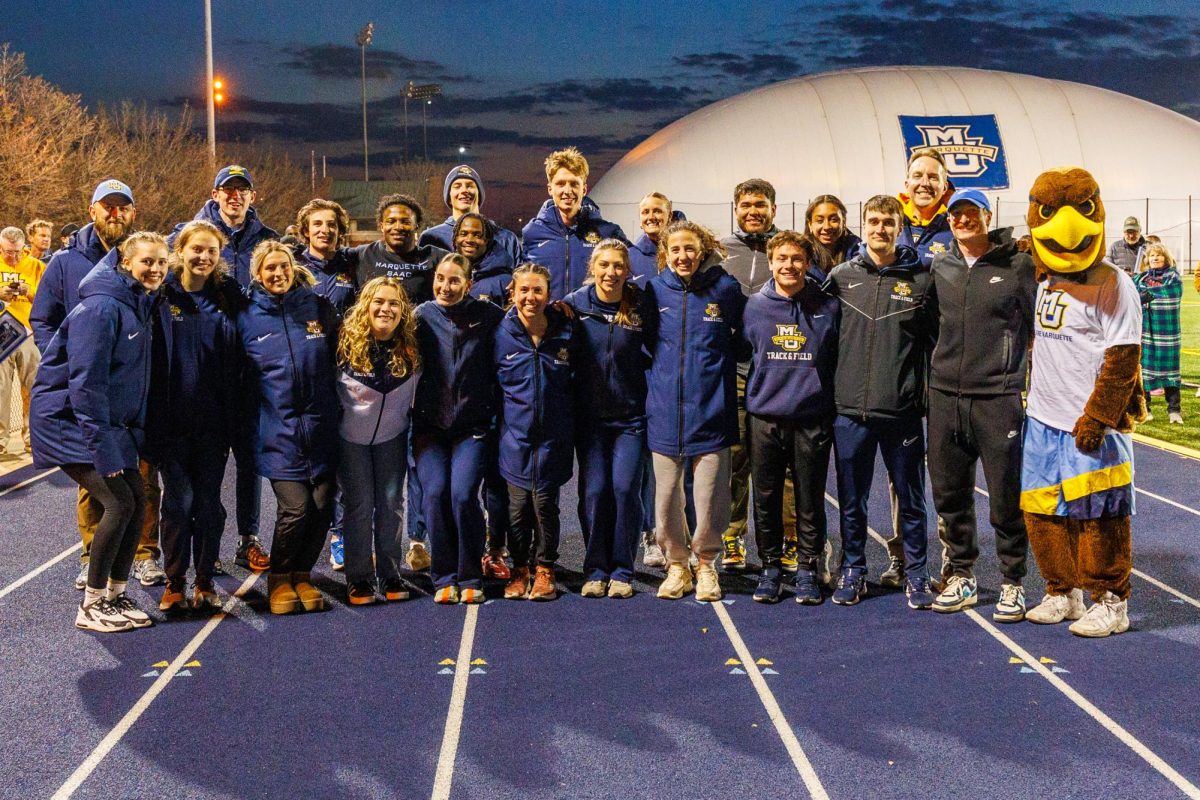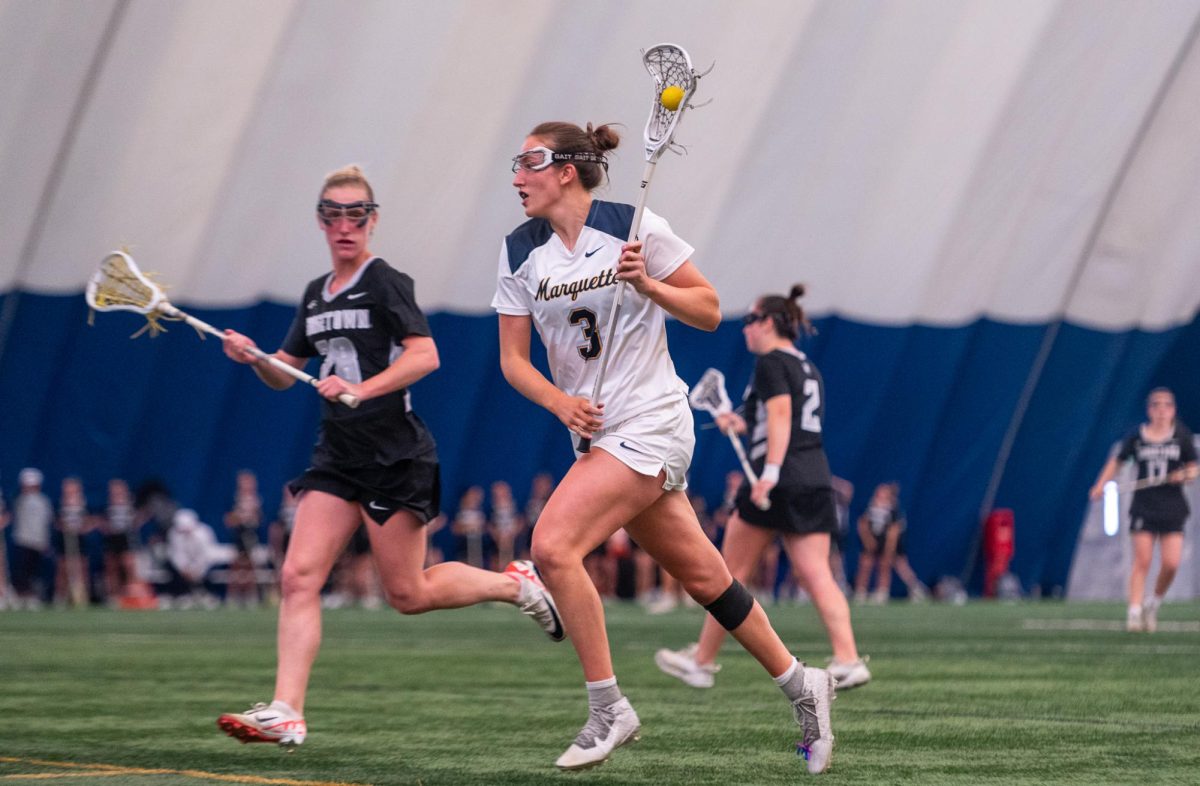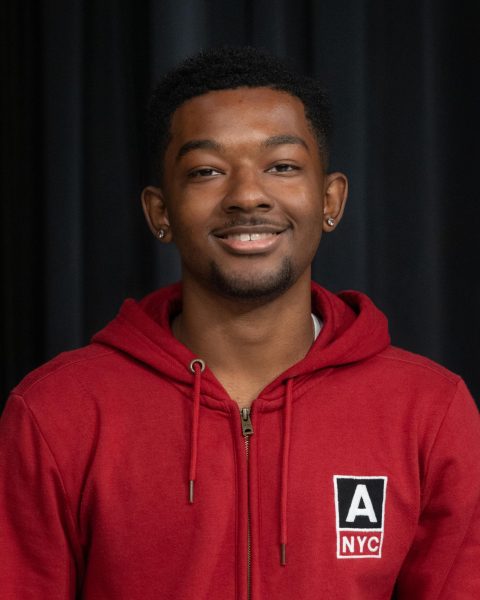Patrick Gifford has only been the assistant director of sports performance of Marquette track & field for one year, but the athletes he works with can see the impact he has made on the program.
“I struggled with our past coach, I did not like his coaching method and style especially for me, it didn’t work,” senior jumper Claudia Milan said. “As soon as Giff came in, he was very open. He’s been putting just the right amount of pressure that we need to be good, but also being there and understanding that we’re humans.”
Junior sprinter K.T. Thomas said Gifford has used some of the former director of sports performance’s techniques, but he puts his own spin on it, with an emphasis on being attentive to his athletes.
“He’s really put in his edits and touches to it, and I feel like its working out pretty well,” Thomas said. “I’ve been enjoying them and he’s been really paying attention to everybody. If you can’t do it at a certain level, he’ll suggest you go down in weight or he will pay attention to your technique to make sure you do it right in the beginning, so you will do it right as you progress.”
Gifford — who also works with the men’s lacrosse team — said he prioritizes power development for sprinters, jumpers, throwers and multis through Olympic-based movements and squats. He said his goal is to make athletes stronger and faster, particularly focusing on the improving the hip’s extension abilities.
“Developing maximum power output using Olympic based movements and squats trying to get them stronger and faster with increasing their force,” Gifford said.
When customizing workouts for each player, Gifford said there are challenges, but the key is to establish a connection with the athlete.
“You have to look at the event and start to tailor their program based on their event, then build a relationship with and understand their performance history and injury history,” Gifford said.
Gifford’s approach to injuries is practical, acknowledging they will happen, but shifting the focus to decreasing the likelihood and severity by strengthening tissues through proper loading and recovery strategies like movement, sleep and nutrition.
“The biggest goal is just trying to get the tissue to be as strong and resilient as possible. What they do in the weight room and practice is just a small part of what sets them up,” Gifford said.
Milan said Gifford’s training workouts accommodate soreness in the weight room and prioritize open communication within the team.
“If you stay quiet, he’s not going to know if you’re hurt. If you tell him ‘I’m pretty sore I don’t think I can workout today,’ he quickly accommodates you,” Milan said.
Milan said Gifford’s holistic approach extends beyond the gym.
“He’s making sure that I’m eating correctly,” Milan said. “You can feel yourself being weaker during practice if you don’t.”
This story was written by Dakota Barnes-Rush. He can be reached at dakota.barnes-rush@marquette.edu or on Twitter/X @DakotaRushMU.






